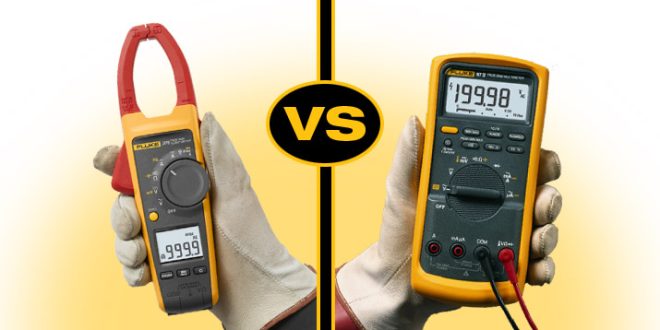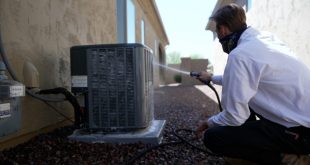Suppose you are an electrician or your work in the electronics industry, and you are told you need a meter for measuring electrical currents. In that case, you will need a clamp meter or a multimeter. The problem is knowing which one. So, here we’ll look at the types of meters, their differences, and what they are used for.
Clamp meter
The clamp meter measures the electrical current running through wires and converts the data into a readable value. They calculate to the nearest tenth or hundredth of the unit being measured. Although they are called clamp meters, you don’t clamp them to the wire. Instead, you open the jaw area of the clamp meter, place it around the wire and reclose the jaws. You must try and keep the wire as central as possible within the clamp meter to get the most accurate reading; once you’ve done that, push the button. As the current flows through the conductor, the ferrite iron inside the clamp’s jaws measures the magnetic field produced by the wire, and it displays it as a value we can read. The fact that the clamp meter goes around the wire makes it a safer option than the multimeter because you do not have to expose any wires for a reading. It can be used with both live and non-live wires.
Multimeter
A multimeter performs similar tasks as a clamp meter, but its forte is measuring voltage, DC, and resistance. It measures in milliunits – milliohms, milliamps, and millivolts making it more accurate than the clamp meter, but these high-resolution measurements make it a slower device. Unlike the clamp meter, the multimeter does use exposed wires to make its readings and therefore, they cannot be used under live conditions.
Which one?
In most circumstances, the clamp meter is enough to do the job, plus it is the safest and easiest of the two meters to use. They are used regularly by those working in fields such as:
- Industrial maintenance technicians
- Electricians
- Control technicians
- Building maintenance, and
- HVAC technicians
For those whose jobs fall into the category of electronics technicians, then you will find both clamp meters and multimeters are essential to performing your job correctly. We recommend a trusted source like RS to get expert advice on which type of meter you need and which of its wide varieties will best suit your needs. With the right expert advice, you won’t be wasting money on the wrong multimeter or clamp meter, nor will you buy an inferior product.
When the job you have to do involves measuring an AC, your best option is a clamp meter. However, when it comes to DC, it is the multimeter you need. The clamp meter will be sufficient for most people, but an electronics technician will need both. For more information on clamp meters, contact the team at RS for their expert advice.
 Jobsearchdone.com Top News Share Website
Jobsearchdone.com Top News Share Website




